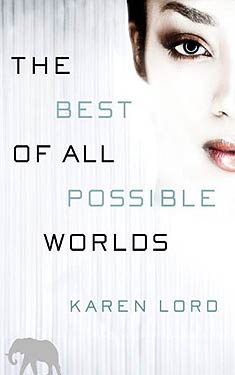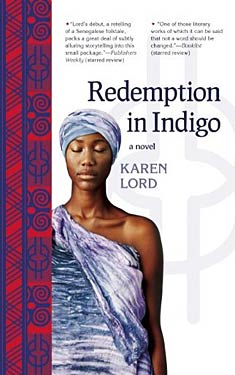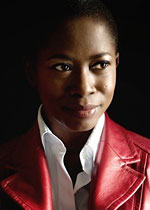WoGF Review: The Best of All Possible Worlds by Karen Lord
 Guest Blogger and WWEnd member, Rob Weber (valashain), reviews science fiction and fantasy books on his blog Val’s Random Comments which we featured in a previous post: Five SF/F Book Blogs Worth Reading. Be sure to visit his site and let him know you found him here.
Guest Blogger and WWEnd member, Rob Weber (valashain), reviews science fiction and fantasy books on his blog Val’s Random Comments which we featured in a previous post: Five SF/F Book Blogs Worth Reading. Be sure to visit his site and let him know you found him here.
 Karen Lord‘s debut novel Redemption in Indigo was one of the books that received a lot of attention in 2011 and 2012. It’s one of those books I mean to pick up but so far I haven’t read it yet. From what I understand of the reviews, it’s a book well worth reading. While looking for suitable books for the Women of Genre Fiction reading challenge I came across Lord’s second novel, The Best of All Possible Worlds, in a bookstore in Amsterdam. If her first novel is anywhere near as good as the second, I can see what the fuss was about. The Best of All Possible Worlds is a very good science fiction novel. Comparisons with the work of Ursula K. Le Guin are made on the inside flap of the cover. For once, I don’t disagree with what it says there. Something the flap text doesn’t mention is that there clearly is a bit of Bradbury in the novel too.
Karen Lord‘s debut novel Redemption in Indigo was one of the books that received a lot of attention in 2011 and 2012. It’s one of those books I mean to pick up but so far I haven’t read it yet. From what I understand of the reviews, it’s a book well worth reading. While looking for suitable books for the Women of Genre Fiction reading challenge I came across Lord’s second novel, The Best of All Possible Worlds, in a bookstore in Amsterdam. If her first novel is anywhere near as good as the second, I can see what the fuss was about. The Best of All Possible Worlds is a very good science fiction novel. Comparisons with the work of Ursula K. Le Guin are made on the inside flap of the cover. For once, I don’t disagree with what it says there. Something the flap text doesn’t mention is that there clearly is a bit of Bradbury in the novel too.
What do you do when your planet and the center of your culture has been wiped out in a single strike? That is the question facing the Sadiri who had the good fortune to be away from home at the time of the strike must answer. Besides drastically reduced numbers, they also face a severe gender imbalance. The question of whether the Sadiri have a future as a separate people or should blend in with the other peoples of the galaxy is very much on their mind. Scientist Grace Delurua is assigned to a project to see if salvaging Sadiri culture by introducing new blood from the planet Cygnus Beta is feasible. It will be a life changing experience for Delurua and the Sadiri.
WoGF Review: The Best of All Possible Worlds by Karen Lord
 Wendy B. (nightxade): My brother introduced me to science fiction, fantasy and comics when I was barely out of diapers and LeVar Burton encouraged my love of reading throughout my youth. If my love of reading is the only legacy I can pass forward to my little geeklings, I would be a very happy mom. (If they pick up my love of gaming, writing and their dad’s love of cooking, too, then that would be even better!). Now I happily share my bibliophilia with my fellow bibliophiles at bibliosanctum.blogspot.com.
Wendy B. (nightxade): My brother introduced me to science fiction, fantasy and comics when I was barely out of diapers and LeVar Burton encouraged my love of reading throughout my youth. If my love of reading is the only legacy I can pass forward to my little geeklings, I would be a very happy mom. (If they pick up my love of gaming, writing and their dad’s love of cooking, too, then that would be even better!). Now I happily share my bibliophilia with my fellow bibliophiles at bibliosanctum.blogspot.com.
Editor’s note: This review was submitted in last month and counts for the May review poll.
 The Best of All Possible Worlds takes place in a distant future, featuring varied species of humans separated by different planets and genetic developments that result in some differences in appearance and mental abilities. Many of these people are brought together by various tragedies to the planet known as Cygnus Beta. The story takes place shortly after the heinous destruction of Sadira, home to a stoic race of people who pride themselves on mental disciplines that have resulted in a level of telepathic communication and emotional control. These elements define the book as “science fiction,” but in truth, this is a wonderful, quiet little love story. Not that this is merely a romance set in space. The science fiction aspect remains prominent, but it is the interpersonal relationships and sociological studies that are at the story’s heart.
The Best of All Possible Worlds takes place in a distant future, featuring varied species of humans separated by different planets and genetic developments that result in some differences in appearance and mental abilities. Many of these people are brought together by various tragedies to the planet known as Cygnus Beta. The story takes place shortly after the heinous destruction of Sadira, home to a stoic race of people who pride themselves on mental disciplines that have resulted in a level of telepathic communication and emotional control. These elements define the book as “science fiction,” but in truth, this is a wonderful, quiet little love story. Not that this is merely a romance set in space. The science fiction aspect remains prominent, but it is the interpersonal relationships and sociological studies that are at the story’s heart.
The story is mainly told by Grace Delarua, a 30-something Cygnus Beta native of mixed race, who works with a contingent of Sadiri people seeking to perpetuate their dwindling culture. The author explains that she was inspired by the 2004 Indian Ocean tsunami that killed a large percentage of females and forced those remaining to relocate and adjust to their new surroundings. On Cygnus Beta, there are several taSadiri societies that the group must visit to determine genetic potential for Sadiri males. Having left Sadira long before, the taSadiri have developed in many different ways, from a society that patterns itself after fantasy lore, to an incestuous mess of classism and many more in between. The goal of Delarua’s group is to maintain Sadiri disciplines and genetics as much as possible through suitable pairings, but as they progress, they find that this is not an easy task.
WoGF Review: The Best of All Possible Worlds by Karen Lord
 Steven M. Long (Stevenmlong) is a writer and editor who blogs about the literary world of speculative fiction at stevenmlong.com and the rest of it (superheroes, aliens, online gaming and general silliness) at foesofreality.com. Blogging allows him to pretend that reading books and magazines and surfing speculative fiction sites constitutes “work.”
Steven M. Long (Stevenmlong) is a writer and editor who blogs about the literary world of speculative fiction at stevenmlong.com and the rest of it (superheroes, aliens, online gaming and general silliness) at foesofreality.com. Blogging allows him to pretend that reading books and magazines and surfing speculative fiction sites constitutes “work.”
 When I sat down to write this review I stumbled a little over how to categorize The Best of All Possible Worlds. Speculative fiction… yes… but it’s also a road novel, a sociological study, and (this came as something of a surprise) quite a good romance. The title of course made me think of Candide, and though I’d only go so far in drawing parallels it was hard not to see the novel in terms of the growth and choices of its lead character.
When I sat down to write this review I stumbled a little over how to categorize The Best of All Possible Worlds. Speculative fiction… yes… but it’s also a road novel, a sociological study, and (this came as something of a surprise) quite a good romance. The title of course made me think of Candide, and though I’d only go so far in drawing parallels it was hard not to see the novel in terms of the growth and choices of its lead character.
The primary narrative is that of Grace Delarua, a minor bureaucrat on the planet of Cygnus Beta, which serves as a gathering point for a myriad of cultures, a “galactic hinterland for pioneers and refugees.” To this world comes Dllenahkh, a Sadiri, whose planet has been destroyed and whose people are trying to find a new home and a way to preserve their culture. Together, along with a team sanctioned by both the government of Cygnus Beta and the Sadiri, they go on a year-long expedition to locate remnants of the Sadiri culture and people that have over time settled on Cygnus Beta, in hopes of finding enough cultural and genetic (there are more Sadiri men than women) elements to preserve the Sadiri race and and way of life.
WoGF Review: Redemption in Indigo by Karen Lord
 Alexandra P. (everythinginstatic) was first introduced to sci-fi by her father, at the age of 14. Although it took 3 years and 2 attempts to finish Foundation, she hasn’t stopped reading sci-fi since, branching out into fantasy and speculative fiction as well. Her biggest passions are reading, tea and photography, and she hopes that 2013 will be the year she finally revisits Hari Seldon. You can read more of her reviews on her blog Wanderlust.
Alexandra P. (everythinginstatic) was first introduced to sci-fi by her father, at the age of 14. Although it took 3 years and 2 attempts to finish Foundation, she hasn’t stopped reading sci-fi since, branching out into fantasy and speculative fiction as well. Her biggest passions are reading, tea and photography, and she hopes that 2013 will be the year she finally revisits Hari Seldon. You can read more of her reviews on her blog Wanderlust.
 Oh, I do love modern fables. There’s always something refreshing about different takes on the same stories that, to me, form part of the collective unconscious. Karen Lord takes a tale of redemption that, to some extent, we are all familiar with, and turns it into an enchanting story about resilience and the power of the human spirit. I found it, by turns, funny, sad, and absolutely exhilarating. For a first novel, it’s certainly a very strong effort and there are only minor quibbles with the overall thing that keep it from a full five star rating for me.
Oh, I do love modern fables. There’s always something refreshing about different takes on the same stories that, to me, form part of the collective unconscious. Karen Lord takes a tale of redemption that, to some extent, we are all familiar with, and turns it into an enchanting story about resilience and the power of the human spirit. I found it, by turns, funny, sad, and absolutely exhilarating. For a first novel, it’s certainly a very strong effort and there are only minor quibbles with the overall thing that keep it from a full five star rating for me.
Redemption in Indigo is the story of Paama, the wife of the gluttonous, foolish Ansige, who one day leaves him and returns to her village of Makhenda. Her husband tracks her down and attempts to try and convince her to return, only to blunder his way into trouble, leaving Paama to deal with the consequences (mostly shame). This leads to her acquiring the Chaos Stick from the djombi, or undying ones, and the quest of one such spirit to retrieve all this power for his own gain. What follows is a wonderfully spun web of redemption, understanding and love through the mythical savannah.
Outside the Norm: Karen Lord’s Redemption in Indigo
Rhonda Knight is an Associate Professor of English at Coker College in Hartsville, SC. She teaches Medieval and Renaissance literature as well as composition courses. When she looked over last year’s reading list, she was shocked to see that only 17% of the authors she read were women. This blog will record her attempts to read authors that are generally considered out of the science fiction norm: women, persons of color, and non-U.S. and non-U.K. authors.
 Nalo Hopkinson calls Karen Lord‘s Redemption in Indigo "[t]he impish love child of Tutuola and Garcia Marquez." I have never read Tutuola, but I immediately understood Hopkinson’s comment when I started reading the book and thought it was a mixture of Laura Esquivel’s Like Water for Chocolate and Chinua Achebe’s Things Fall Apart. So, no matter what authors or book the readers use for their analogies, the most compelling feature of Redemption in Indigo is its ability to mix New World magical realism with Old African folktales, in her case the world of Barbados and its undying spirits, the djombi, with the Senegalese folktales of Anansi, the spider trickster god.
Nalo Hopkinson calls Karen Lord‘s Redemption in Indigo "[t]he impish love child of Tutuola and Garcia Marquez." I have never read Tutuola, but I immediately understood Hopkinson’s comment when I started reading the book and thought it was a mixture of Laura Esquivel’s Like Water for Chocolate and Chinua Achebe’s Things Fall Apart. So, no matter what authors or book the readers use for their analogies, the most compelling feature of Redemption in Indigo is its ability to mix New World magical realism with Old African folktales, in her case the world of Barbados and its undying spirits, the djombi, with the Senegalese folktales of Anansi, the spider trickster god.
The book begins by setting up the narrative as a tale told by a storyteller: an "I" who is talking to a group of "yous," of which the reader is one. The story playfully ends with the storyteller’s solicitations:
"it is terribly dry and thirsty work, speaking these lives into the dusty air of the court, speaking for you to hear and ponder and judge. Perhaps, if you would be so kind as to contribute, I could purchase some refreshments now, find a place to rest my head later, and return to you on the morrow with my voice and memory and strength restored. Please, ladies and gentlemen, if you have at all enjoyed my story, be generous as the pot goes around, and do come back again soon." (182)
He similarly begins the epilogue by telling us that he has been "authorised" to tell us more. This narrative method enhances the folktale elements because it provides an inventive way to fill in cultural background for readers who probably aren’t familiar with the ways of the greater and lesser djombi and the other supernatural beings they encounter.
Our storyteller begins with the story of Paama, who’s left her husband, Ansige, and returned with her family to her village. Paama leaves her husband because of his gluttony. He was "not an epicure, but a gourmand," his every thought and action controlled by his desire for food and his only worry about his next meal (7). When Ansige finally arrives at the village to beg her to return to him, his exploits demonstrate his origin in East African folktale characters. His gluttony gets him into all kinds of trouble from which Paama has to rescue him. However, Paama has bigger problems than her husband. Before Ansige even arrives at her village, two djombi have decided to steal Chaos from another djombi and give it to Paama, which will give her immense power. Just as Paama starts to understand her unwanted power, the indigo djombi, the original wielder of Chaos, has tracked his power to her village.
The relationships Lord forges between the supernatural beings and humanity elevate the plot beyond the typical tale of a heroine who must fight to save her people and their way of life. The supernatural beings are complex characters who are dissatisfied with the way their identities often limit their roles. The storyteller speaks about the indigo djombi:
The djombi are like the human creatures they meddle with, apt either to great evil or great good, and sometimes they switch sides.
This one was the unknown danger. He had switched sides. He had started with benevolence, with the belief that there is the fine potential in humankind waiting only to be tapped. He now viewed the whole stinking breed as a pest and a plague. (58)
 As a symbol of his change from benevolent to malignant, the djombi changes his color to indigo, "a stark and utter setting apart that provoked as much of horror as of awe" (59). Another supernatural being, the Trickster, who usually appears in the form of a spider, changes in the opposite direction. He began "delighting in the frailties of humans and exploiting those weaknesses for his own entertainment" but became bored with "playing the same old practical jokes" (102). After a while he started "turning people to situations of mutual benefit rather than merely gratifying his own sense of the ridiculous" (102). The pleasure in this novel is observing these beings as they learn about their omnipotence and start to interact with Paama and her community in a meaningful way. The ending, while somewhat predictable, gives the readers the happy endings and the redemptions that the title tells them to expect.
As a symbol of his change from benevolent to malignant, the djombi changes his color to indigo, "a stark and utter setting apart that provoked as much of horror as of awe" (59). Another supernatural being, the Trickster, who usually appears in the form of a spider, changes in the opposite direction. He began "delighting in the frailties of humans and exploiting those weaknesses for his own entertainment" but became bored with "playing the same old practical jokes" (102). After a while he started "turning people to situations of mutual benefit rather than merely gratifying his own sense of the ridiculous" (102). The pleasure in this novel is observing these beings as they learn about their omnipotence and start to interact with Paama and her community in a meaningful way. The ending, while somewhat predictable, gives the readers the happy endings and the redemptions that the title tells them to expect.
Because Karen Lord explores these big ideas of omnipotence and redemption in a Caribbean setting, her book has garnered attention outside the F/SF community. It won the 2008 Frank Collymore Award, given to an unpublished Barbadian work. It was also nominated for the 2011 Bocas Prize for Caribbean Literature. Back in the F/SF world, the book was a finalist for the World Fantasy Award and won the 2011 Mythopoetic Award and the 2011 Crawford Award for the best fantasy novel by a new writer. For more on its awards, see Karen Lord’s interview with Chesya Burke.
The adjective that comes to mind when I think about Redemption in Indigo is fresh. The story has recognizable elements–heroes, gods meddling with the affairs with humans, mythological characters and folktales–but Lord uses these elements in unexpected ways, except for the ending, which is satisfying in its predictability. Her style of fantasy is smart, inventive, and innovative. I look forward to Lord’s next book.



















 Full Details
Full Details

